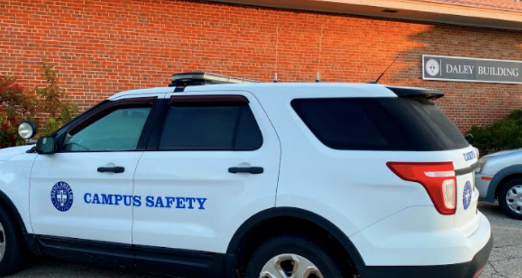Annual report reveals new data on sexual assault and liquor violations

The Office of Campus Safety and Security, located in the Daley building, released 2022 Clery campus crime report
October 20, 2022
The 2022 Annual Security report revealed new data about an increase in the number of rape and liquor law violations compared with previous years. According to the report, in 2021 there were 16 cases of rape on campus, 3 instances of fondling, 2 liquor law arrests, and 75 liquor law violations referred for disciplinary action. These numbers alone are startling, but it is important to dive deeper to truly understand this data.
One of the most significant jumps is found in cases of rape. In 2020 there was 1 case reported, while 16 were reported in 2021. Rob Browne, Director of the Department of Safety and Security, stressed the importance of understanding what the statistic of 16 cases of rape represents.
“For clarification, these were reported incidents of sexual assault. As you know, sexual assault encompasses a far greater spectrum than rape, albeit still a very traumatic event and one we take just as serious,” said Browne.
There is also potential for there to be duplicates in that statistic. “We simply do not always know if the 16 reported were several of the same case that came in from multiple sources because many of them came in as anonymous,” said Browne.
Molly McKean, Executive Director Human Resources and interim Title IX Coordinator, echoed similar sentiments. She explained how the College tries to weed out duplicates from their data, but sometimes they do not know if something is a duplicate, especially depending on how the case is reported. “Sometimes, particularly with assaults that don’t go through a full Title IX process, sometimes they occur, and we can’t tell from what is reported in the various ways that it’s actually a duplicate,” said McKean.
“This statistical number is actually in line with a several year look back. Unfortunately the year before comparison was so shocking because of the Covid experience,” said Browne. The impact of the pandemic on this data cannot be overlooked, as there was almost an entire semester with no students on campus at the height of the pandemic, and strict Covid protocols with little to no intervisitation allowed.
The past reports currently available on the Saint Anselm website go back to 2016. There were 5 instances of sexual assault in 2016 and 2017, 9 reported in 2018 (although 2 of the 9 took place in 2015), and 6 reported in 2019 (1 took place in 2017, 2 were anonymous Title IX reports).
In addition to the increase in sexual assault, 2021 saw a rise in liquor related violations. Browne also contributed this rise in part to loosening Covid restrictions. There were 34 law violations referred for disciplinary action in 2020 and 75 in 2021. From a pre-Covid perspective, there were 157 cases in 2019 and 316 cases in 2016.
“If I had to make an educated guess, the numbers at the end of this year will likely mirror the numbers from this last year as the student on campus experience has returned to a more ‘near normal,’” Browne said.
While Browne attributed Covid as a contributing factor for an increase in sexual assault and liquor violations, he also acknowledged that just because the data may be a return to normalcy does not negate the severity of the actions.
“Students’ safety should always be a concern… Safety is the responsibility of everyone. We encourage everyone that if they ‘see something, say something,’” said Browne. “As far as there being more of a concern from one year to the next, I do not feel there is any greater danger to any student,” he continued.
McKean emphasized the variety of resources and avenues for reporting available to students. “We have the Harbor, on-call counselors 24 hours a day, a robust Residential Life staff, and we are hiring a new full-time Title IX officer in November,” McKean explained. “We want to make sure that if students face an assault they are not boxed into a particular remedy because the remedy is different for each person,” she said.
Creating a culture that promotes safety and well-being includes campus resources, but the members of the community play an important role in protecting themselves and others. “Watch out for yourselves, watch out for each other. If you see something, say something, and hold students who are committing assaults accountable,” said McKean.
The Annual Security and Fire Safety Report is mandated by the Jeanne Clery Disclosure of Campus Security Policy and Campus Crime Statistics Act. It was enacted by Congress in 1990 to establish a nationwide system of reporting crime on college campuses.


